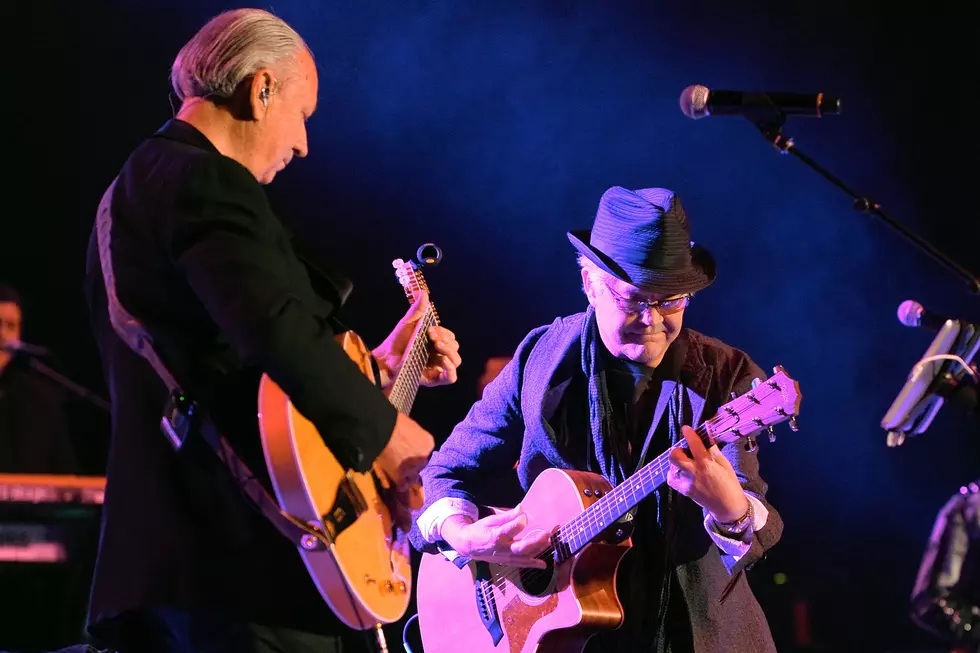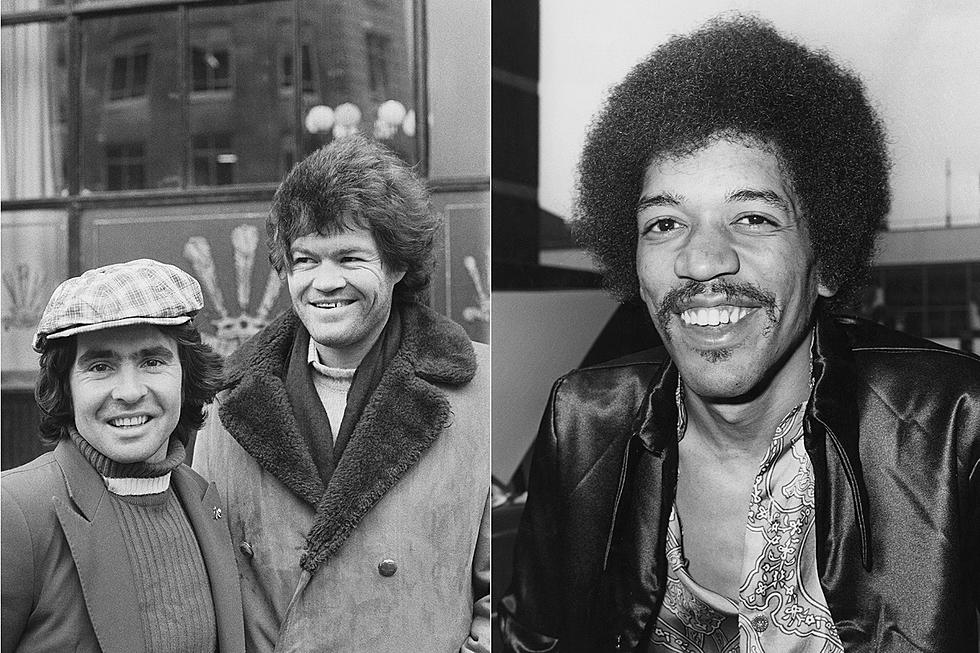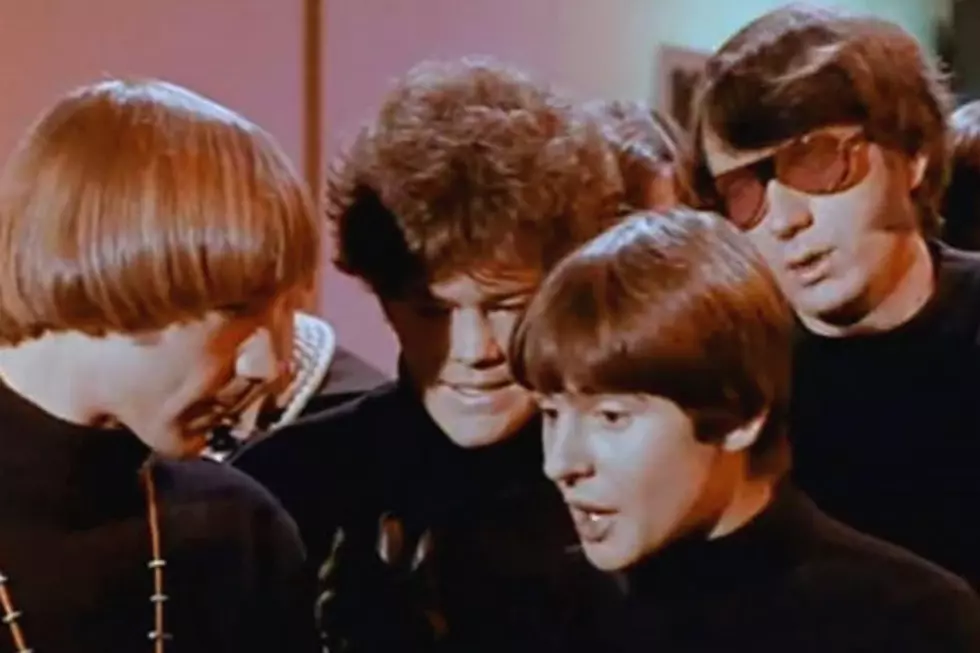
How the Monkees Regrouped Again for a Final Goodbye: Exclusive Interview
Micky Dolenz and Michael Nesmith will help fans say farewell to the Monkees this fall with a final run of dates. Truthfully, however, any of their previous treks could have been the last. “Every time we did a tour over the past four decades, we never had any plans to continue,” Dolenz tells UCR. “They were all the final tour.”
That makes perfect sense if you consider how the band began. “The Monkees was this television show about this group, and after the show went off the air, there was no Monkees,” Dolenz explains. “It didn’t exist, except in the music that would be played. But there was no Monkees office or management or business. There was just these four guys that lived in different parts of the world.”
The Monkees would periodically find themselves onstage again in some form, but it never felt like there was any continuity. “They’d make us all deals, and we would go on the road. When that tour was over, there was no more Monkees,” Dolenz says. “It just didn’t exist, and that is how it exists to this day. So, every time we’d finish a tour over the decades, we’d all shake hands [and] say goodbye with no expectations that we’d ever get back together again.”
Their first reunion was in 1986 – but minus Nesmith, who opted not to participate because he was being busy with other projects. Monkees mania had been revived as old episodes of the TV show ran marathon-style on MTV. Dolenz and bandmate Peter Tork returned to the studio to record three songs for a new Monkees compilation; the whimsical “That Was Then, This Is Now” became a Billboard Top 20 hit and the musical centerpiece of their 20th-anniversary tour.
Still, the tour itself was complex. Davy Jones declined to join Dolenz and Tork for the new recordings but subsequently became upset about the success of “That Was Then, This Is Now,” according to Dolenz’s 1993 memoir. He says there was a tense scene backstage in September 1986 at the MTV Video Music Awards, where Jones quarreled with the other band members.
All was sunny and light as the three walked out onstage to present an award, but after their duties wrapped, the Monkees didn't speak for a month. “When I watched the act disintegrate into a war of petty squabbles and ego battles, it not only took me by surprise, it broke my spirit,” Dolenz writes in I’m a Believer: My Life of Monkees, Music and Madness.
“I remember the ‘86 tour. It was stressful, I remember that. It was the first time we had gotten back together,” Dolenz says. “It was incredibly stressful and intense. But you know, the proof is in the pudding. It was a few years, but it wasn’t that long after that that we got back together again. So that’s kind of my point. Time heals all wounds, I guess.”
Listen to the Monkees' 'That Was Then, This Is Now'
The gigs Dolenz has been playing with Nesmith over the past few years (billed as The Monkees Present: The Mike and Micky Show) help to underline the point. He and Nesmith put together an evening’s worth of songs and stories for the shows, which felt more intimate than previous outings.
Their set list drew on the expected hits but also went further, digging out rarely played chestnuts. Nesmith and Dolenz spent plenty of time reminiscing during the performance, sharing anecdotes and peppering their banter with humor. Despite being a band that was never supposed to be an actual band, their shows revealed that the Monkees had amassed a sturdy and meaningful catalog of work.
Recent tours also helped to highlight the quality of Nesmith’s songwriting. “We’ve really had the opportunity to explore some wonderful material, especially stuff that Nez wrote and performed,” Dolenz told UCR in 2020. “We always did Nez tunes, even when he wasn’t with us onstage, Peter and David and I. We’d always do a lot of the Nez tunes. But having Nez out there with me, doing the tunes, has really been wonderful.”
Because of the pandemic, Dolenz had the chance to finally take action on a long-imagined project, tackling a full album of Nesmith songs. Dolenz Sings Nesmith pulls from his work with the Monkees but also his subsequent solo work. The idea had been on Dolenz's mind for close to a decade, partially inspired by an album of Randy Newman covers his friend Harry Nilsson did long ago, Nilsson Sings Newman.
Nesmith’s son, Christian, even helped to shepherd the Dolenz project, working on the musical arrangements and song selections with the singer and longtime Monkees associate Andrew Sandoval. While there are some well-known songs in the track listing, overall the focus is on the less familiar corners of Nesmith’s songwriting output.
Still, Dolenz says he didn’t reference any of the original recordings prior to beginning work on the album. Some of the songs were indelibly part of his memory, while others had found their way into his collection thanks to Nesmith himself. “I knew the material pretty well over the decades, especially the stuff during the Monkees,” Dolenz says. “But even after, when Nez was doing the First National Band, he would send me records and CDs and stuff. So I was familiar with most of it.”
The arrangements of the songs on Dolenz Sings Nesmith are striking: Dolenz’s take on “Don’t Wait for Me,” from 1969’s Instant Replay, recasts the Monkees song as a wistful acoustic number that feels poignant when paired with his vocals.
Listen to Micky Dolenz Perform 'Don't Wait for Me'
The combination of “Nine Times Blue” and “Little Red Rider” preserves the segue that combined the two on Nesmith’s 1970 album Magnetic North, although Dolenz had fun taking a different approach musically.
“Doing that with just my voice and grand piano, that was actually my idea. One of my contributions,” he notes. “Christian had done a demo in a different manner and it was great, it was fine. But I don’t know what I was thinking. I just woke up one morning or something and thought, 'Wow, how about me just doing it out of tempo with just a big grand piano,' and he loved the idea.”
The road-rockin' feel of "Little Red Rider" is echoed in other spots on the album, particularly on Dolenz's rendering of "Propinquity (I’ve Just Begun to Care)," a track Nesmith tackled a few times with the Monkees before recording it with his First National Band. ("Propinquity" appeared on 1971's Nevada Fighter, a year after the Nitty Gritty Dirt Band recorded a version.)
Both Dolenz and Nesmith were admittedly stumped when it came to figuring out a fresh approach for “Circle Sky,” from 1968’s Head soundtrack. Nesmith’s partner, Circe Link, came to the rescue: “She does marvelous wonderful multiple-layered backgrounds on the album,” Dolenz says. “She just was walking by the studio, and she said, 'Why don’t you try it as an Indian Raga?' It kills me, because talk about a song that I knew well. I’ve sang that in every single Micky or Monkee concert for four decades!”
Dolenz Sings Nesmith offers a tribute to the songwriter’s style that's long overdue, and Dolenz, with his theatrical approach to singing, proves to be the perfect person to lead the charge. Dolenz points to Nesmith’s approach and structure as being creatively inspiring.
“He is a great poet with the words for a singer, which is what I am. As a singer, you want to sing a song that has an interesting, challenging-at-times melody and then sing the words that have some meat on the bones,” Dolenz says. “Nesmith, for my money, his songs accomplish both of those challenges. Sometimes, his poetry can be a bit enigmatic, but that’s what poetry often is. It’s sometimes more of a feeling than something literal in that sense.”
Dolenz and Nesmith will embark on the final Monkees dates beginning on Sept. 11 in Seattle.






